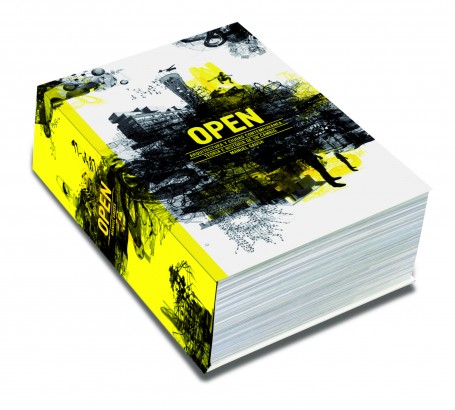Today Manuel Gausa presented his concepts and the theories he developed on informational and open logics.
Manuel believes that in the last 20 years a new way of thinking has emerged, that is a new operative logic, associated to a new territory of research, or “mental map”, through more open ways of conceiving and organizing the dynamics and irregularities of space. Hence thinking with a more effective spatial formulation and communication, being less prejudiced and more relational with respect to its information (intended in the wider sense, that is as an active vector of exchange).
A new relational and “informational” logic ultimately connected with the understanding of our environment, hence of the dynamic systems and their relative irregular structures, capable of combining, through links, multiple events and heterogeneous processes (for example complex energies) contingently activated and concurred in the same field of action and vibration.
In particular, the debate touched a series of topics, or doubts arisen during Manuel’s research, that are to be the theme for the students’ next research exercise (The man with x-ray eyes):
1_ Are we working with a new architectural logic – a new thought – or just with new technological tools?
2_ Are we in a new cultural time – informational – or even in a predominantly post-modern culture?
3_ Can we really speak of a “new architecture” – complex, advanced, interactive, informational, etc. – or are we just assisting to the wrinkling, the folding – the mannerist warp – of the modern and post-modern architectures?
4_ Can we detect, in “these new operational logics”, a propositive-critical attitude towards the system –radicalism, rebellious, alternative, etc.- or just a propositive-conformist attitude (and / or collaborationist) with the system? (operational-optimism vs. fresh-conservatism?)
5_ What differences of modern radical avant-garde of the 60’s (alternative) to the advanced innovation (reactive) of the 2000′s (strategic)?
6_ Can we talk about a shared and cultural adventure and research in recent architecture or just about a combination (a sum) of individual trajectories?
7_ If we can speak of a same relational logic … why join Greg Lynn – or Hernan Alonso for example – to Lacaton-Vassal … or MVRDV?
8_ What differentiates the anticipatory explorations (heterodoxes) of the radical modern architecture to the pioneering explorations (heterotopics) of the “informational” advanced architecture?
These doubts brought forth interesting thoughts, and other doubts or questions…
→Does Grasshopper bring us to design a process rather than a building?
→Can we design a process without formalization/ a formal concept?
→How abstract is the process?
→Are we inventing logics according to our tools?
→Does Advanced Architecture create tools that improve humanity? How much do these benefit our society?
→If post-modern architecture is a gesture, calligraphy; is advanced architecture a movement, trajectories in space, the strategy of a process?
→If modern architecture is about structure, is advanced architecture about infrastructure?
→If complexity is a contradiction in modern architecture, is it a symbiosis in advanced architecture?
… and many more.
All of this was topped off with a series of images, diagrams, maps and plans allowing us to complete the theoretical concepts with visual information.



